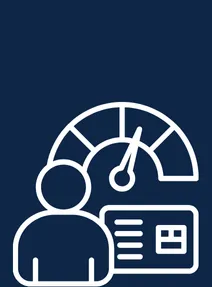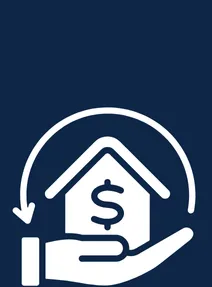Break Fee or Costs
Break Fee or Costs
What Is a Break Fee (Break Cost)?
A break fee—also called a break cost—is a charge your lender may apply
if you end a fixed rate loan earlier than agreed.
This can happen if you:
Refinance before your fixed term ends
Pay off your loan early (e.g. sell your property)
Switch from a fixed to a variable rate
Even if you’ve found a better deal or need to sell, breaking a fixed rate loan
can cost thousands, depending on market conditions.
Why Do Lenders Charge a
Break Fee?
When you fix your loan, the lender “locks in” a deal based on wholesale
interest rates. If you exit early and rates have dropped, the lender loses
money.
The break fee is meant to cover their loss.
Factors that affect break fees:
You want consistent repayments
You’re buying your first home and need predictable budgeting
You expect rates to rise and want to lock in current rates
Considerations Before Fixing
Your Rate
While fixed rate loans offer stability, they do come with some limitations:
Time remaining on the fixed rate term
Loan amount
Interest rate difference between now and when you fixed
Current
There’s no standard formula—and lenders won’t know the exact cost until
you request a payout figure
Real Example (for illustration only)
You fixed a $400,000 loan at 5.5% for 3 years.
2 years later, the fixed rate for the same loan is now 4.5%.
You decide to refinance or sell early.
How to Avoid or Reduce
Break Costs
Portability: Transfer your existing fixed loan to a new property
without feesStay within prepayment limits: Up to $30,000 over the full fixed term
is usually fee-freeLet your loan revert to variable: Wait out the fixed term, then switch to
a variable rate with no feeRequest a quote first: Ask your lender for a break cost estimate
(valid 2–5 days)
⚠️ Things to Consider Before
Breaking a Fixed Loan
Always check with your lender before making changes
Ask for a payout quote that includes break fees
Compare the savings from refinancing vs. the cost to break
Speak to your mortgage broker before switching or selling
When Might It Still Be Worth Paying?
You might choose to pay a break cost if:
You’re refinancing to a much lower rate and will save more long-term
You’re consolidating debts
You’re selling your property
You want features only available with variable loans
Just make sure the numbers stack up.
Final Tip
Break costs can be a hidden sting in fixed rate loans.
Before you fix your interest rate—or break it—make sure you understand the
risks and rewards.
💬 Want to Avoid Unexpected Loan
Surprises?
Browse more first home buyer tips and smart loan advice on EstateSeeker.com.au
— your guide to buying smarter in Australia.
What Is a Break Fee (Break Cost)?
A break fee—also called a break cost—is a charge your lender may apply if you end a fixed rate loan earlier than agreed.
This can happen if you:
Refinance before your fixed term ends
Pay off your loan early (e.g. sell your property)
Switch from a fixed to a variable rate
Even if you’ve found a better deal or need to sell, breaking a fixed rate loan can cost thousands, depending on market conditions.
Why Do Lenders Charge a Break Fee?
When you fix your loan, the lender “locks in” a deal based on wholesale interest rates. If you exit early and rates have dropped, the lender loses money.
The break fee is meant to cover their loss.
Factors that affect break fees:
You want consistent repayments
You’re buying your first home and need predictable budgeting
You expect rates to rise and want to lock in current rates
Considerations Before Fixing Your Rate
While fixed rate loans offer stability, they do come with some limitations:
Time remaining on the fixed rate term
Loan amount
Interest rate difference between now and when you fixed
Current
There’s no standard formula—and lenders won’t know the exact cost until you request a payout figure
Real Example (for illustration only)
You fixed a $400,000 loan at 5.5% for 3 years.
2 years later, the fixed rate for the same loan is now 4.5%.
You decide to refinance or sell early.
How to Avoid or Reduce Break Costs
Portability: Transfer your existing fixed loan to a new property without fees
Stay within prepayment limits: Up to $30,000 over the full fixed term is usually fee-free
Let your loan revert to variable: Wait out the fixed term, then switch to a variable rate with no fee
Request a quote first: Ask your lender for a break cost estimate (valid 2–5 days)
⚠️ Things to Consider Before Breaking a Fixed Loan
Always check with your lender before making changes
Ask for a payout quote that includes break fees
Compare the savings from refinancing vs. the cost to break
Speak to your mortgage broker before switching or selling
When Might It Still Be Worth Paying?
You might choose to pay a break cost if:
You’re refinancing to a much lower rate and will save more long-term
You’re consolidating debts
You’re selling your property
You want features only available with variable loans
Just make sure the numbers stack up.
Final Tip
Break costs can be a hidden sting in fixed rate loans.
Before you fix your interest rate—or break it—make sure you understand the risks and rewards.
💬 Want to Avoid Unexpected Loan Surprises?
Browse more first home buyer tips and smart loan advice on EstateSeeker.com.au — your guide to buying smarter in Australia.
Related Topics
By linking a transaction account to your home loan, an offset account helps reduce the interest charged on your loan balance.
Lenders may discount parts of your income—like bonuses or casual earnings—when assessing your borrowing power. This is known as “income shredding” or an “income haircut.”
The cooling-off period is a brief timeframe after signing a property contract when buyers can cancel the deal, often with little or no penalty.
Understand how lenders determine your borrowing power and what factors impact loan approval. Learn how to improve your eligibility and maximise your home loan options.
Discover the five key factors lenders evaluate when assessing loan applications and learn how each plays a role in securing mortgage approval.
A high LVR could mean extra costs, while a low LVR can save you thousands. Find out why lenders care so much about this number.
Related Topics
By linking a transaction account to your home loan, an offset account helps reduce the interest charged on your loan balance.
Lenders may discount parts of your income—like bonuses or casual earnings—when assessing your borrowing power. This is known as “income shredding” or an “income haircut.”
The cooling-off period is a brief timeframe after signing a property contract when buyers can cancel the deal, often with little or no penalty.
Understand how lenders determine your borrowing power and what factors impact loan approval. Learn how to improve your eligibility and maximise your home loan options.
Discover the five key factors lenders evaluate when assessing loan applications and learn how each plays a role in securing mortgage approval.
A high LVR could mean extra costs, while a low LVR can save you thousands. Find out why lenders care so much about this number.
© 2025 Estate Seeker.com.au - All Rights Reserved. Content on this site is for educational purposes only.
Always consult with a professional before making any investment decisions.









